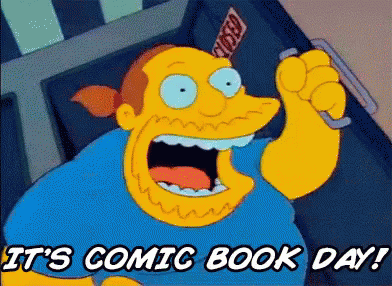
Rejoice comic book lovers! September 25th is National Comic Book Day (not to be confused with Free Comic Book Day) and to celebrate, we’ll take a look at how comic books have influenced fine art and vice versa.

Calvin and Hobbes discussing art
There’s always some debate going on as to whether consumable media is considered “art.” Comic books are often disregarded as any form of art, even though they’ve been inspired by famous artists and works of art from the start -- heck, Batman himself was influenced by a sketch in Leonardo da Vinci’s notebook-- and it didn’t take long for modern artists to start including superheroes in their own work.
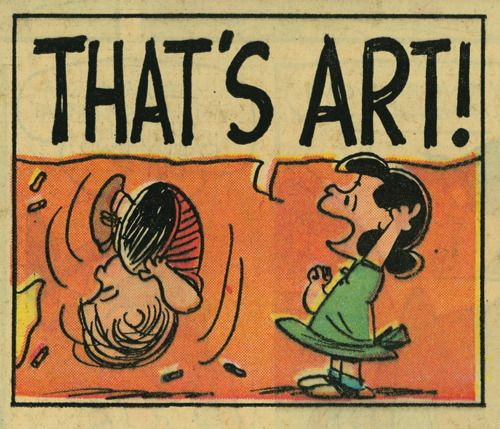
Whether you grew up reading comics like me or have never read a comic book in your life, we’ve all been influenced by comics in one way or another. It never hurts to learn a little bit more about either comic books or art, so let’s see how both have influenced each other throughout the years.
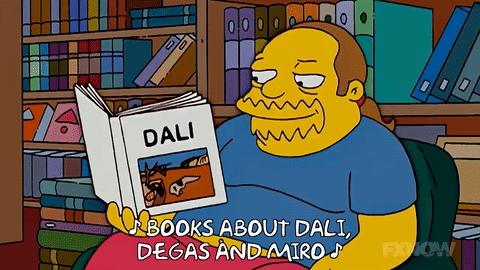
Comic Book Guy wants you to brush up on Dali, Degas, and Miro
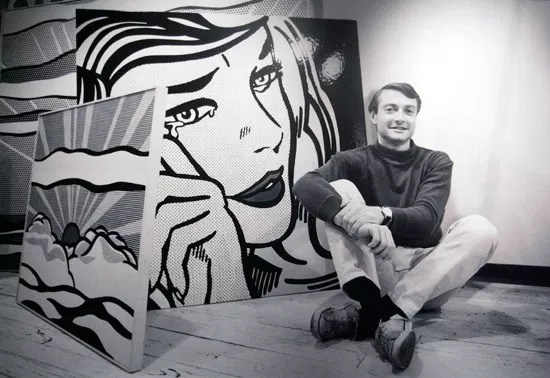
We can’t talk about comic books and art with talking about Roy Lichtenstein. Lichtenstein made his art career successful due to his parody of comic book images. His process of copying comic book images involved projecting the desired image onto his canvas. He claimed he didn’t draw a picture to reproduce but to “recompose” it. Whatever you call it, the original comic book artists weren’t exactly pleased about their drawings making Lichtenstein a millionaire in his attempt to combine “high art” with “low art.” Lichtenstein reportedly didn’t even like comic books and only reproduced the images for profit. Here are some of Lichtenstein’s most popular works alongside the original comic book panels he copied them from.
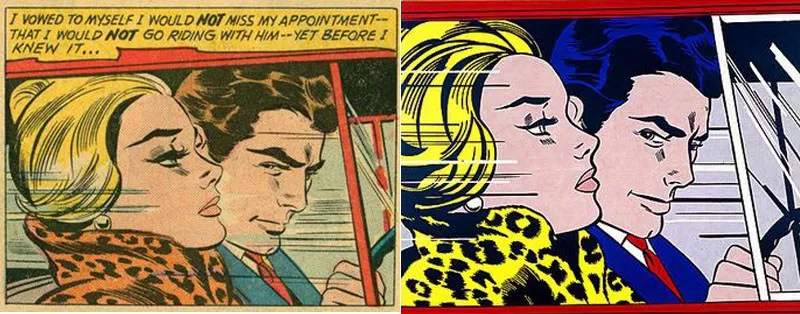
DC Comics Girl’s Romances, no. 78 (artwork by Tony Abruzzo);
Roy Lichtenstein’s In the Car (1963)
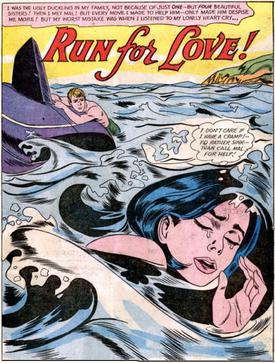
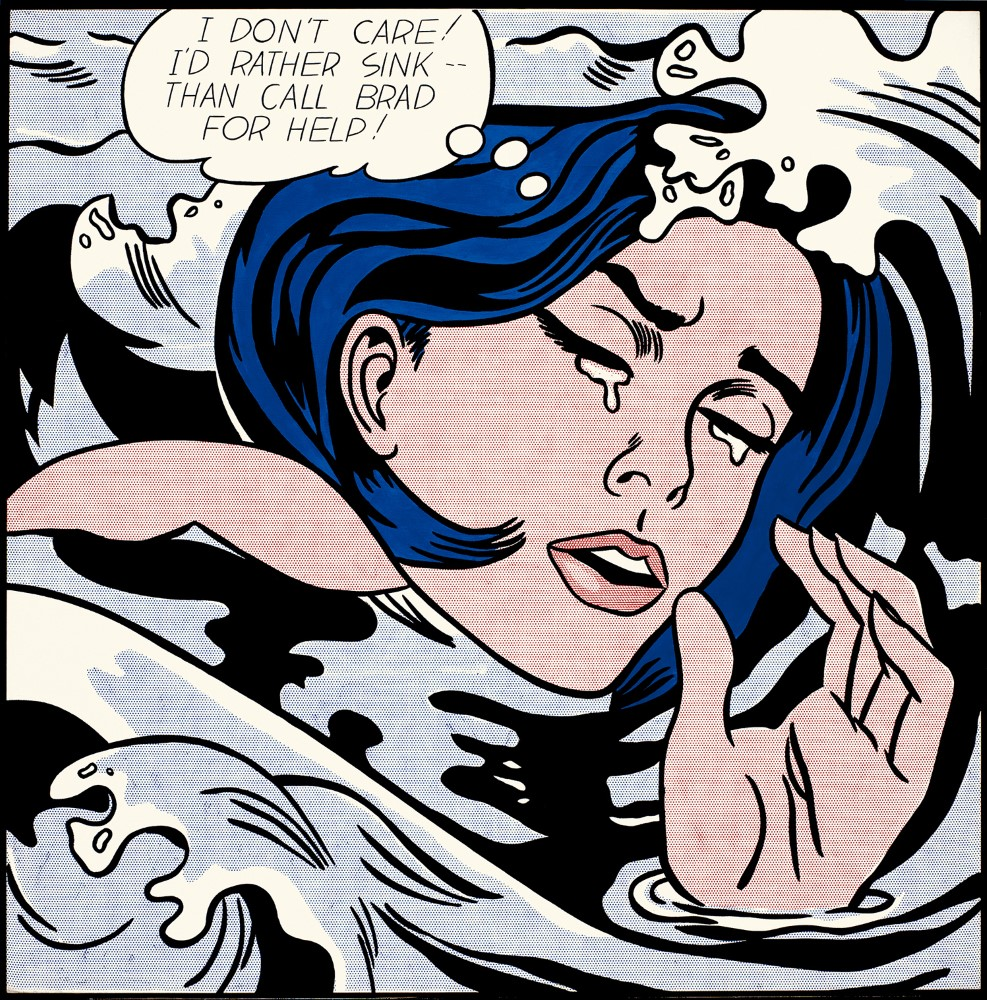
DC Comics' Secret Love no. 83 (artwork by Tony Abruzzo);
Roy Lichtenstein’s Drowning Girl (1963)
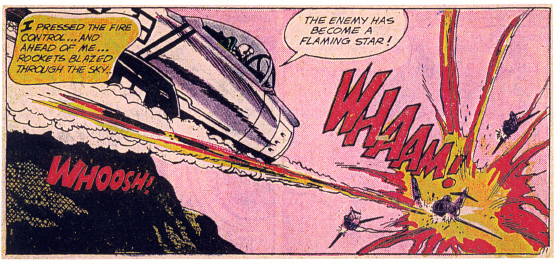
DC Comics All American Men of War, No. 89 (artwork by Irv Novick)
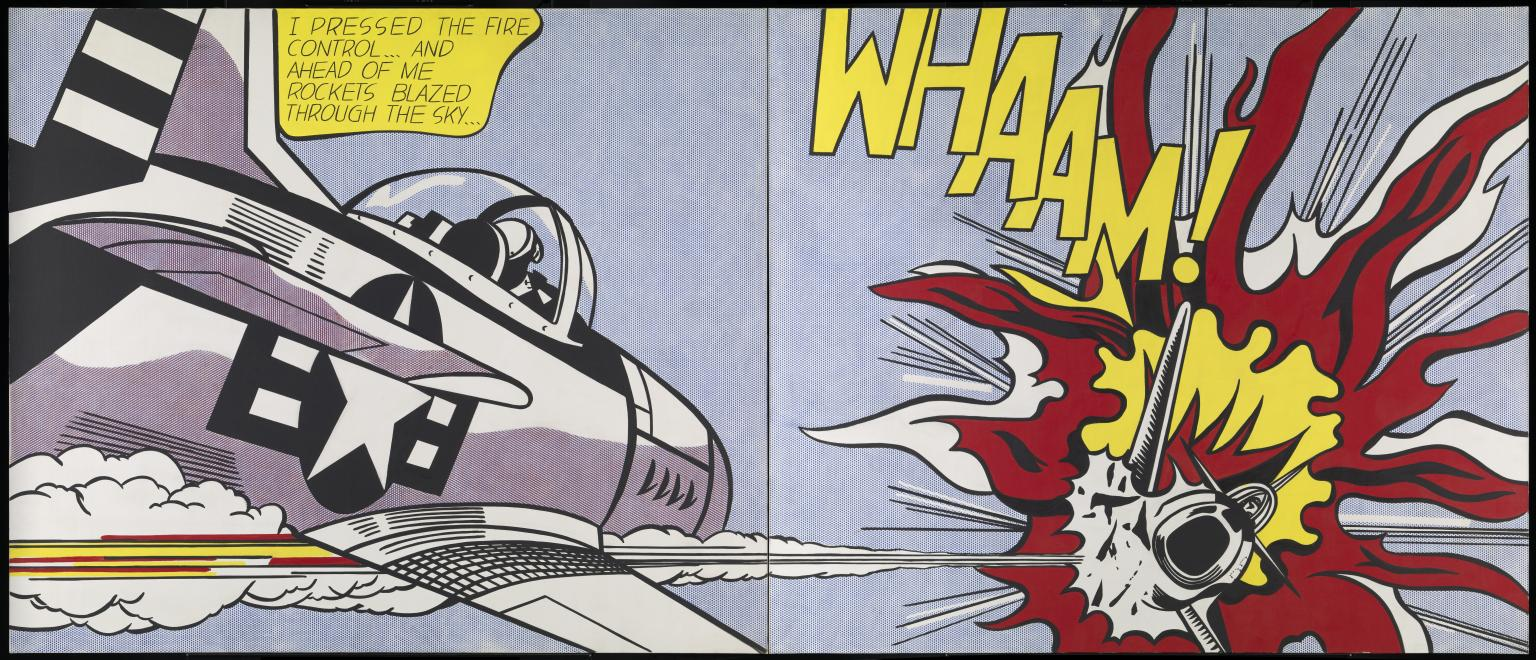
Whaam!, Roy Lichtenstein, 1953
As you can tell, Lichtenstein replaced the types of aircraft in the panel. He “borrowed” the planes from different war-related comics to create the final painting. The artist who drew the original target plane, Russ Heath, created this short comic strip expressing his feelings toward Lichtenstein for popularizing his work without giving due credit.
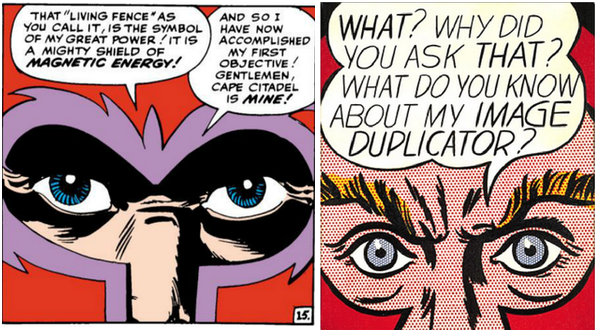
Jack Kirby’s The Uncanny X-Men #1, 1963;
Roy Lichtenstein’s Image Duplicator, 1963
If you’re interested in finding more of the original sources for Lichtenstein’s work, check out the ongoing project Deconstructing Roy Lichtenstein by David Barsalou, who spent 32 years tracking down the original comic book artists and giving them proper credit where credit is long overdue.
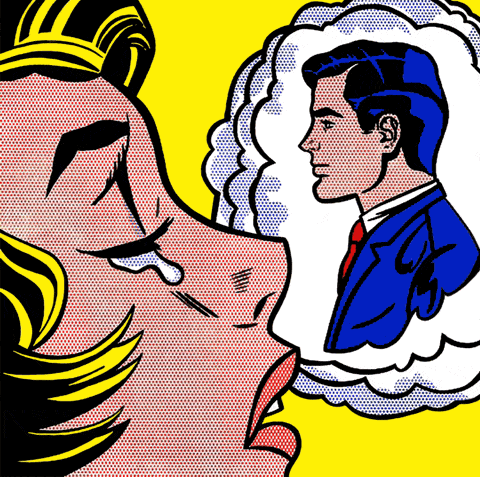
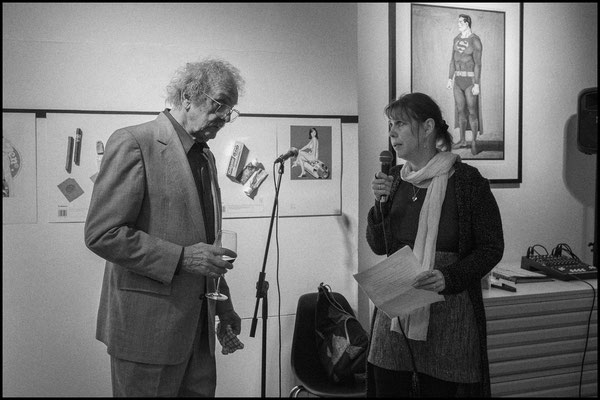
Lichtenstein may have not liked comics, but Mel Ramos sure did. You might be familiar with Ramos’ paintings of nude women, but he’s also well-known for his paintings of superheroes. This Sacramento-based artist studied under Wayne Thiebaud, and was one of the first artists to include comic book images in his work. Ramos primarily painted DC characters but he also painted his favorite heroes from other lesser known comic book publishers.
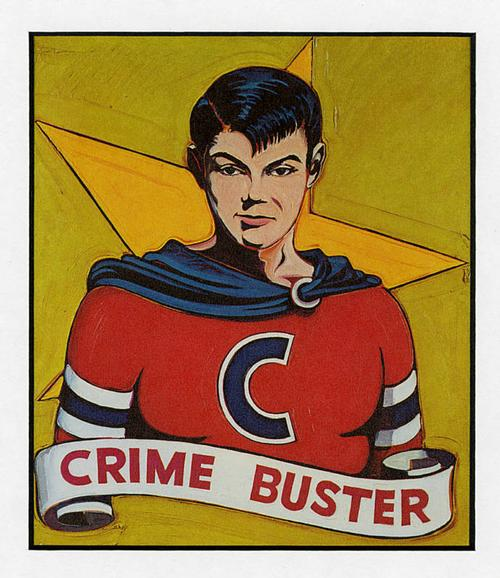
Crime Buster, Mel Ramos, 1962
Extra nerd points if you recognize the hockey-uniformed Crimebuster, beloved boy hero of Boy Comics who fought crime to avenge his parents’ death. If you’re a fan of Rage Against the Machine, this image might look familiar- an altered version of the painting was used for their 1996 album Evil Empire.
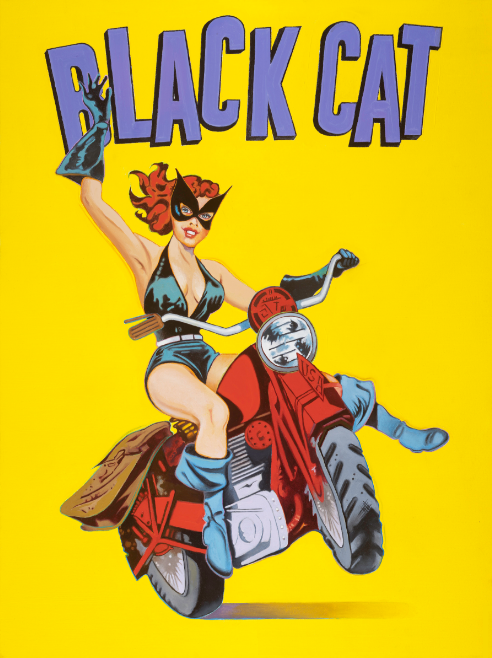
Black Cat, Mel Ramos (2015)
This painting of Black Cat, a Hollywood actress turned vigilante, perfectly blends Ramos’ style of nude ladies erotically posing on objects with his love for comics. Not to be confused with Batman’s Catwoman or Spiderman’s Black Cat, Black Cat was the most popular superhero from Harvey Comics, a publisher known for their characters Richie Rich and Casper the Friendly Ghost.
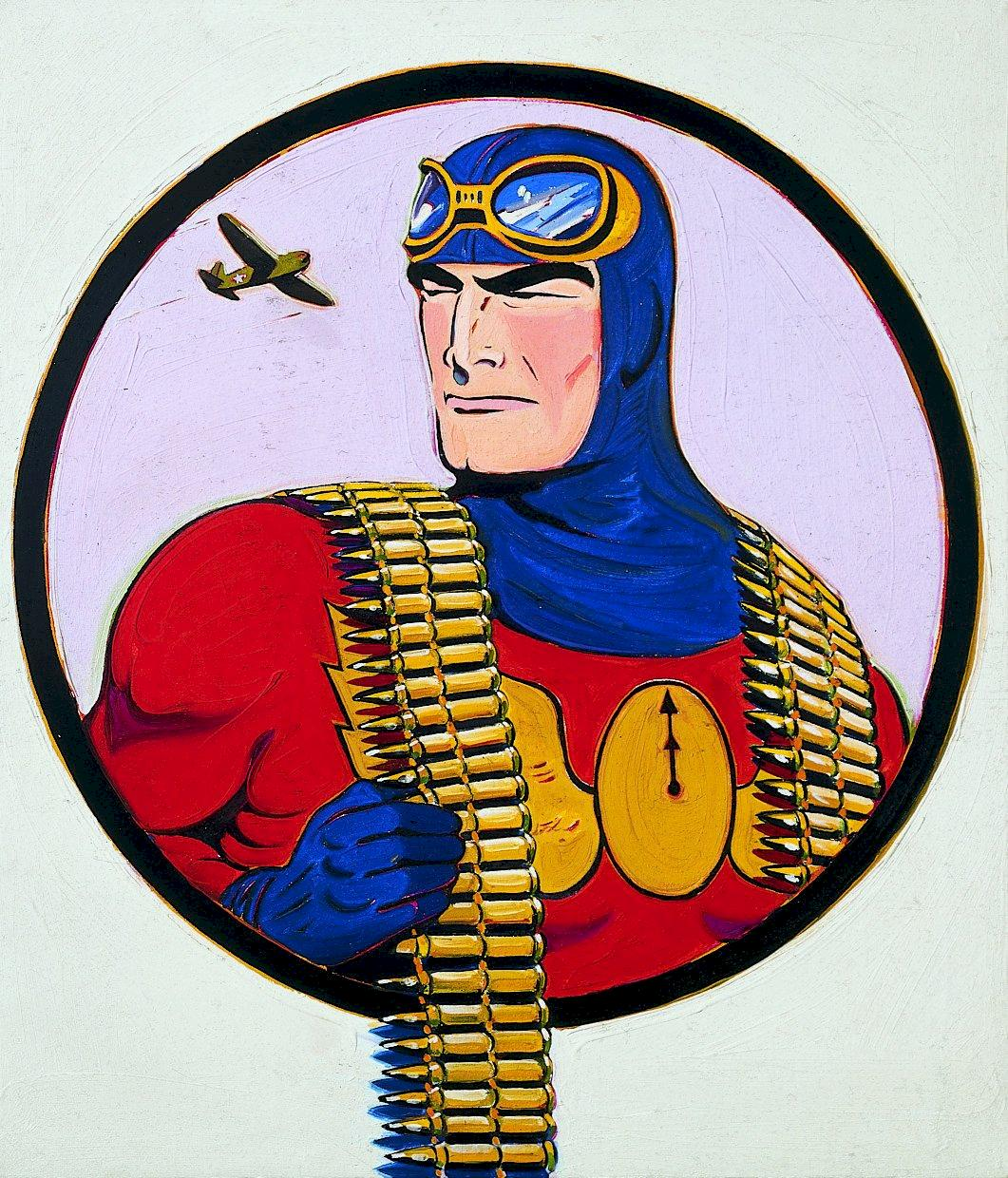
Captain Midnight, Mel Ramos (1962)
Captain Midnight was an extremely popular radio serial whose titular character was a WWI army pilot turned superhero. The characters were adapted into comic book form at first by Dell Comics and later by Fawcett Comics (who originally published the Captain Marvel comics before losing the character to DC.)
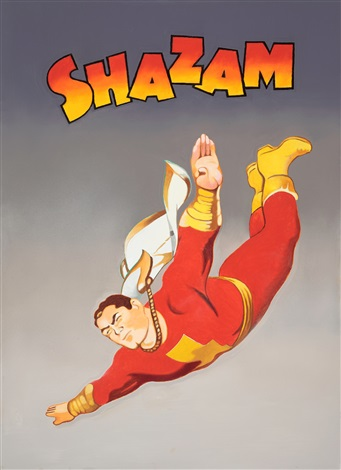
Shazam, Mel Ramos, 2015
Speaking of Captain Marvel, here he is as part of Ramos’ collection “Sirens and Heroes.” To avoid conflicts with Marvel’s character Captain Marvel, DC published all their Captain Marvel comics under his catchphrase/trigger word “Shazam.” DC acquired Captain Marvel’s character after suing Fawcett comics over Captain Marvel’s likeness to Superman- though they may have just been jealous that Captain Marvel sold more comics than Superman.
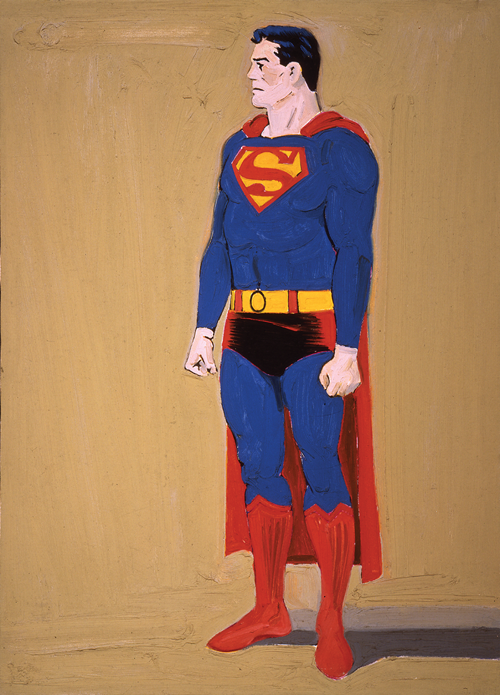
Superman, Mel Ramos, 1962
When it comes to comic books, you don’t get more iconic than Superman. Mel Ramos’ Superman was beloved enough to become part of the permanent collection at the de Young Museum in San Francisco. If you’d like to learn more about Ramos’ depiction of the Man of Steel, check out our review on it!
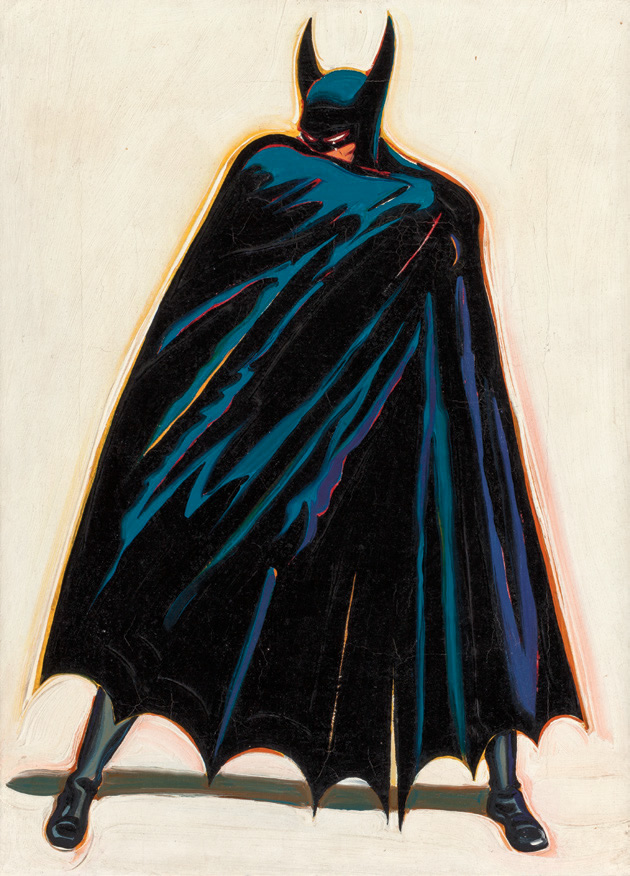
A Sinister Figure Lurks in the Dark, Mel Ramos (1962)
This long-lost painting of Gotham’s caped crusader was originally traded by Mel Ramos for a stack of comic books. When it was rediscovered in 2015 and offered by Heritage Auctions in NYC, it was predicted to be worth at least $100,000- it sold for over $173,000. I hope those comic books were really worth it!
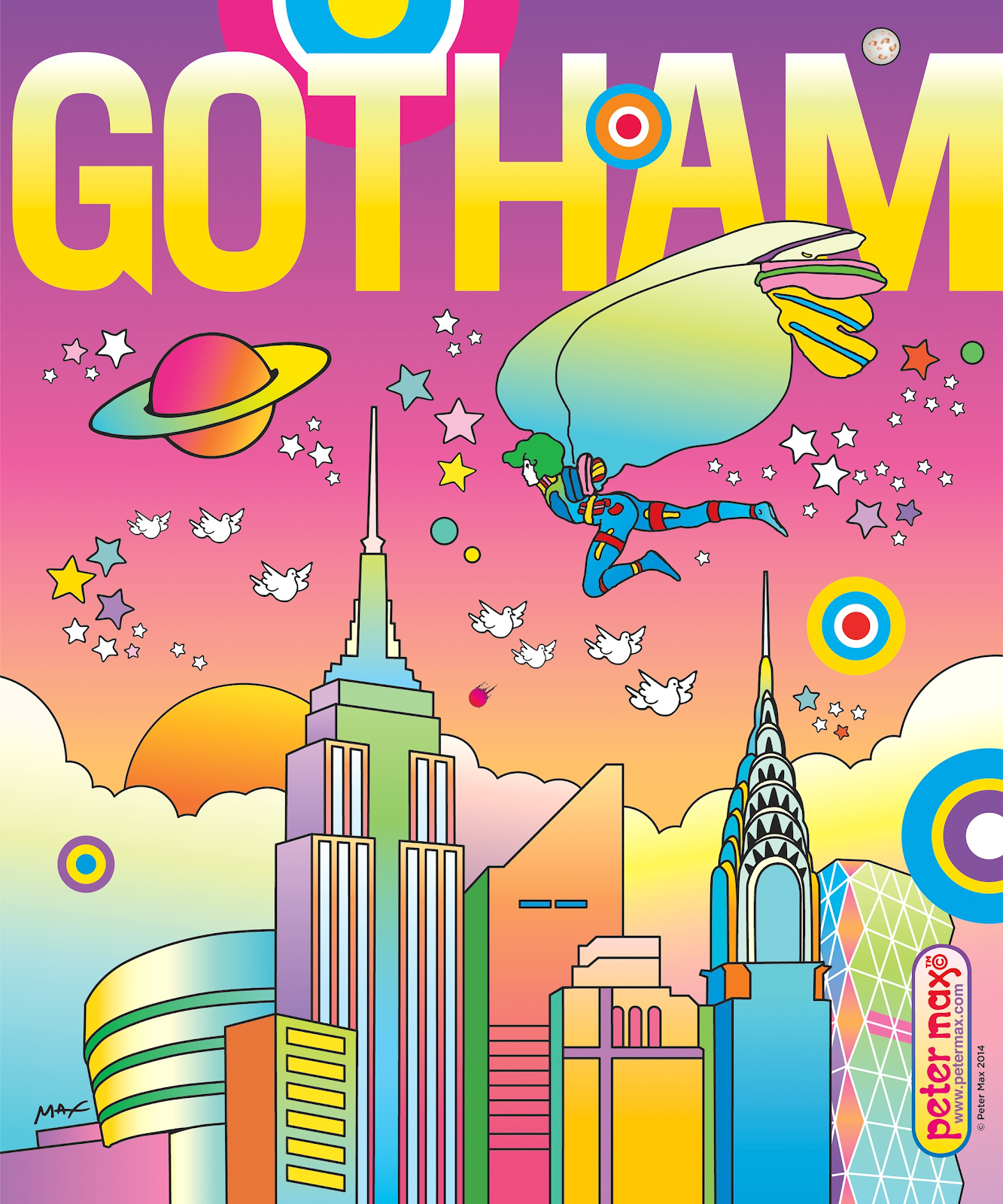
Gotham, Peter Max, 2014
Batman shows up almost as often as Superman in contemporary art, perhaps even more. Here you can see his home depicted in Peter Max’s brightly-colored psychedelic style which largely influenced the visual style of the counterculture movement. As part of a special edition series for Niche Media, Marx created a neon, almost angelic version of crime-ridden Gotham. The caped figure flying doesn’t appear to be Batman, but perhaps the Joker with his trademark green hair and white face. Maybe it’s supposed to be an alternate universe within the Batman series?
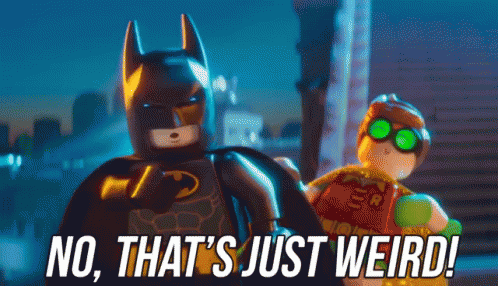
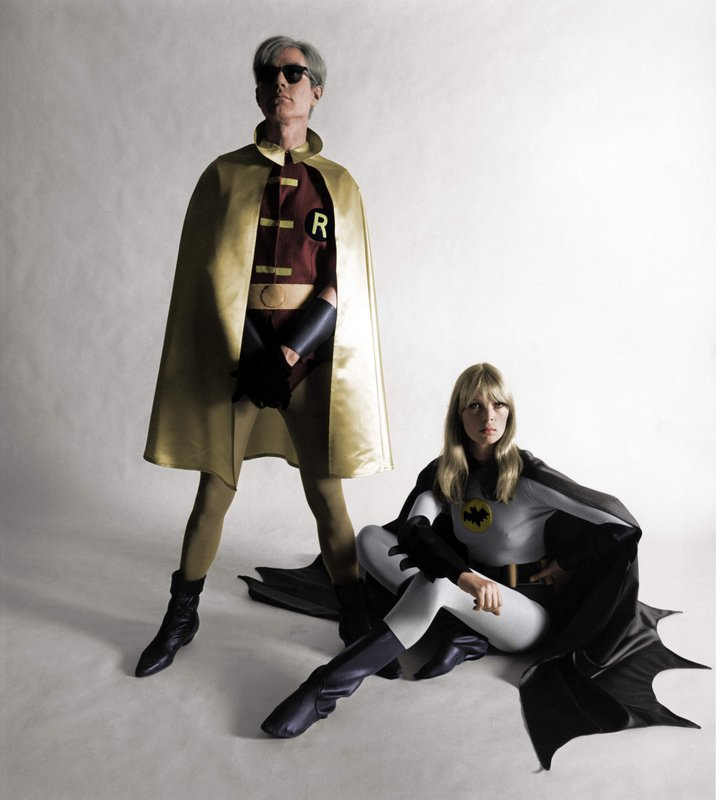
Andy Warhol and Nico for Esquire, Frank Bez, 1967
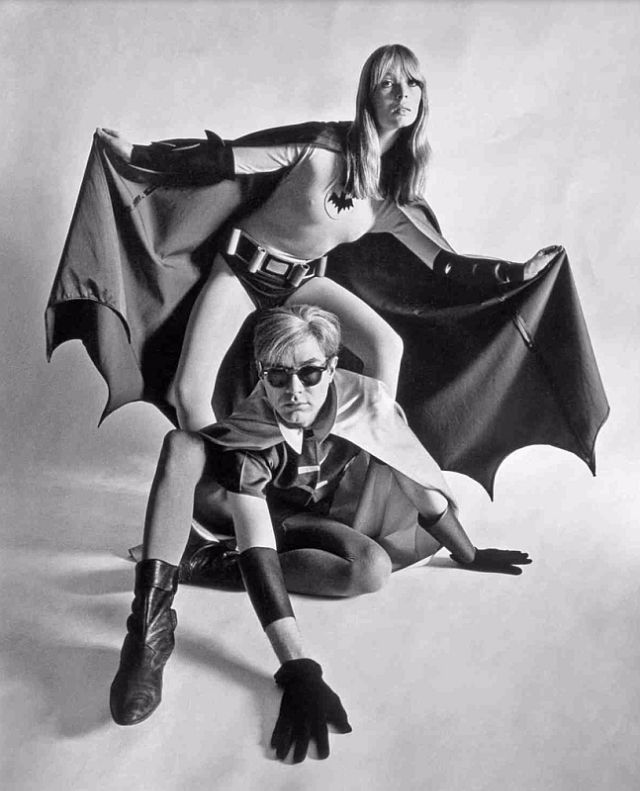
the best-cast Batman and Robin we never knew we needed

the heroes Gotham deserves
Perhaps no artist loves Batman more than Andy Warhol. Not only did he and Chelsea Girl star Nico dress up as Batman and his sidekick Robin in an adorable photo shoot for Esquire, but he even attempted to illegally film his own Batman movie without permission from DC Comics. The film, Batman Dracula, was shown only at his art exhibits and is considered to be the first campy portrayal of Batman (yes, even before Adam West’s Batman!). Unfortunately Batman Dracula is mostly lost, but you can watch a compilation of the partially recovered footage here.
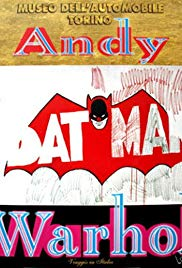
movie poster for Batman Dracula, Andy Warhol, 1961
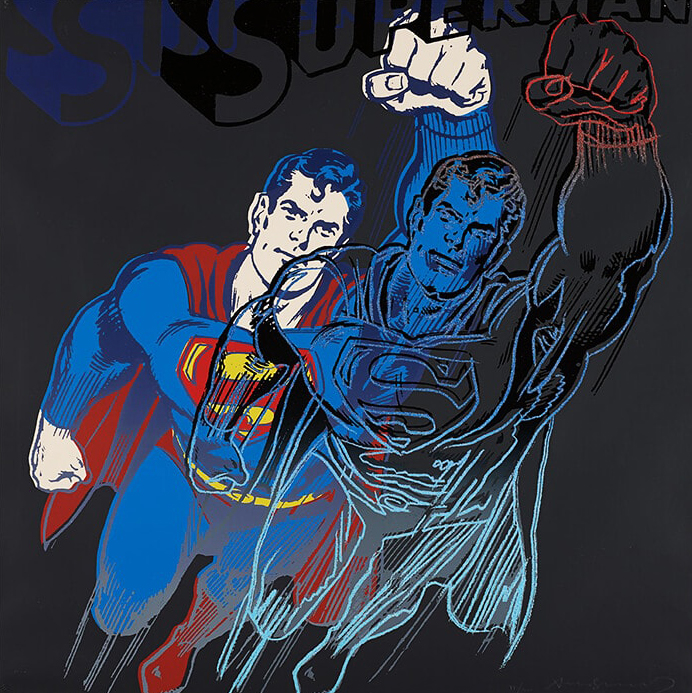
Superman, Andy Warhol, 1981
Warhol’s clearly got an eye for the classics. This print of a flying Superman was featured in his Myths series alongside images of Mickey Mouse, Uncle Sam, and Dracula.
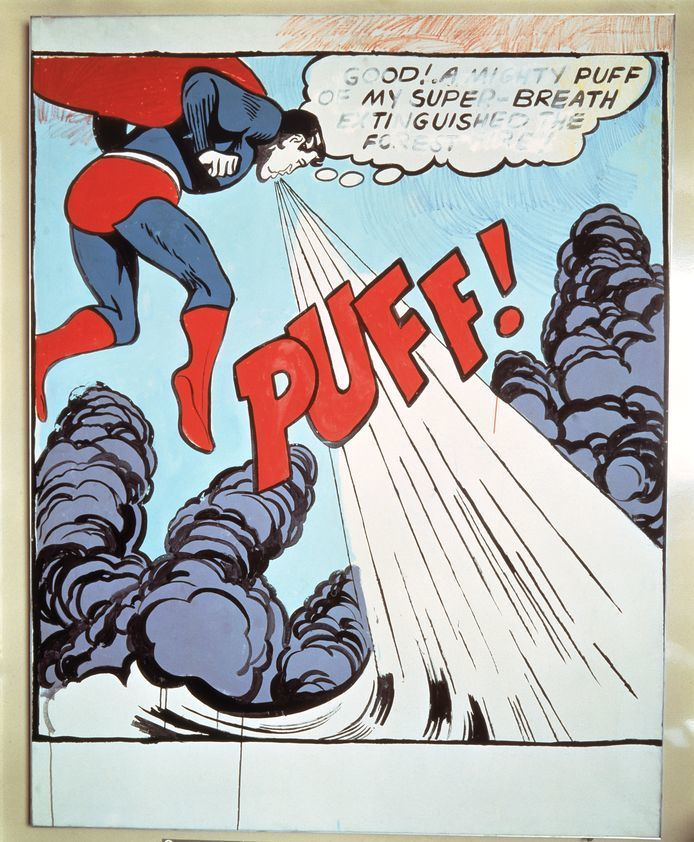
Superman, Andy Warhol, 1961
This print was later converted into the poster for 1989 exhibit “Andy Warhol: A Retrospective” at the MoMa. The real question is, does Superman’s super-breath smell super?
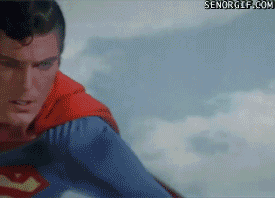
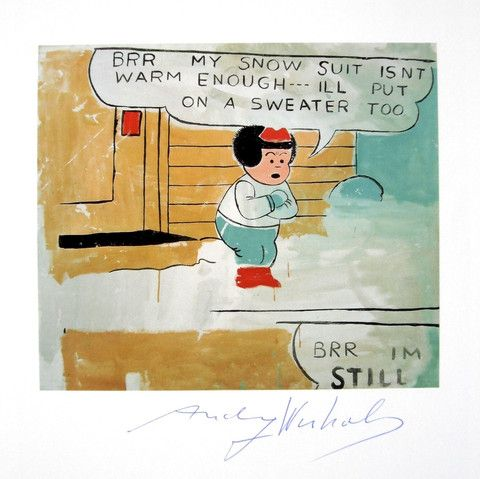
Nancy, Andy Warhol, 1961
In case you forgot, comic books aren’t just populated by superheroes and villains! Here Warhol painted a panel from the Nancy comic strip. Created by cartoonist Ernie Bushmiller, Nancy originated from the 1922 Fritzi Ritz comic. Poor Fritzi Ritz - she went from the star of her own comic to the legal guardian of her adorable niece.
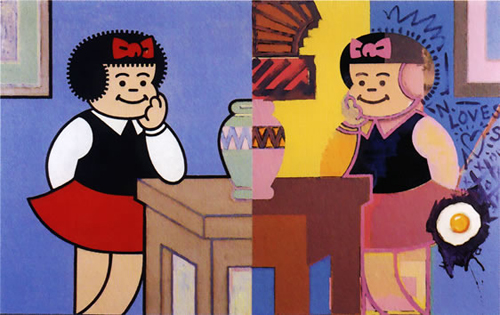
Nancy Diptych, no. 273, Joe Brainard, 1974
Another artist who loved Nancy was Joe Brainard. From 1963 to 1978, Brainard created over 100 images with Nancy, often in strange situations. Brainard’s witty depictions of Nancy helped popularize her as an unlikely cartoon icon in contemporary art.
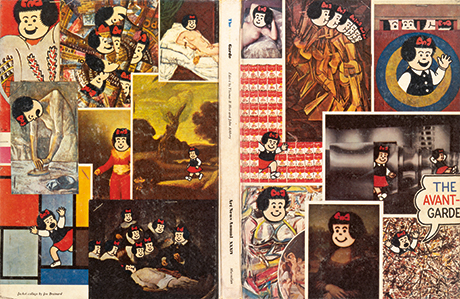
Excerpt from The Nancy Book, Joe Brainard (2008)
Here Nancy appears in Woman Ironing (1904) by Picasso, Olympia (1863) by Manet, The Anatomy Lesson of Dr. Nicholas Tulp (1632) by Rembrandt, Woman I(1950) by de Kooning, Mona Lisa (1503) by Da Vinci, The Nude Maja (1797-1800) by Goya, Target With Four Faces (1955) by Jasper Johns, and Nude Descending a Staircase (1912) by Duchamp. We can also see her drowning in the avant-garde via Jackson Pollock. Where else do you spot Nancy?
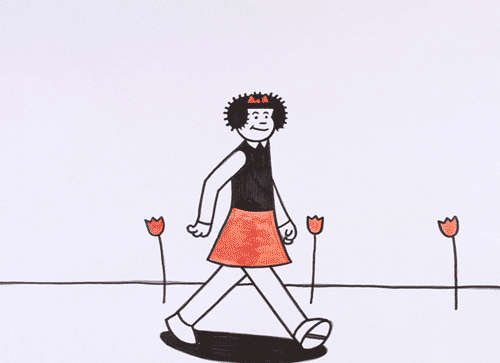
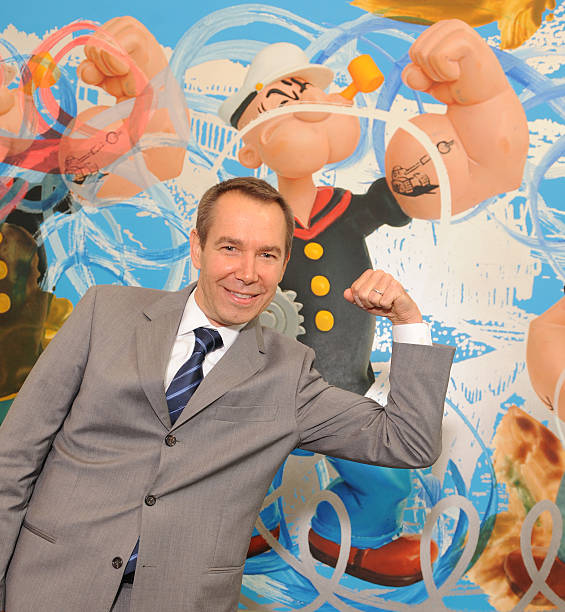
Jeff Koons being photogenic as always in front of Triple Popeye (2008)
More classic comic book characters! Everyone’s favorite sailor man Popeye was the star in a recent series by contemporary artist Jeff Koons. His larger-than-life sculpture of Popeye sold for 28 million dollars to billionaire/art collector Steve Wynn.
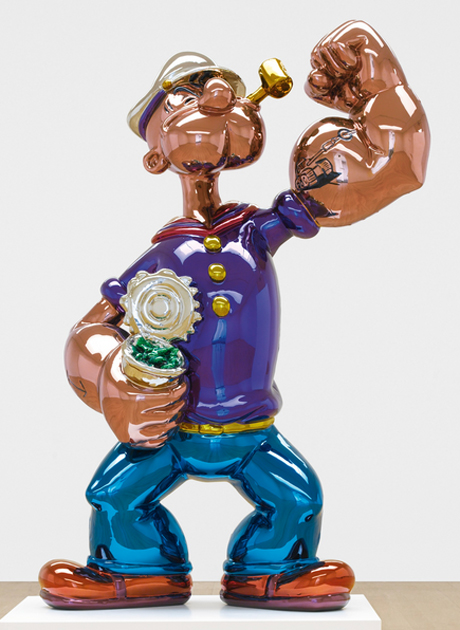
Popeye (Stainless), Jeff Koons, 2009-2011
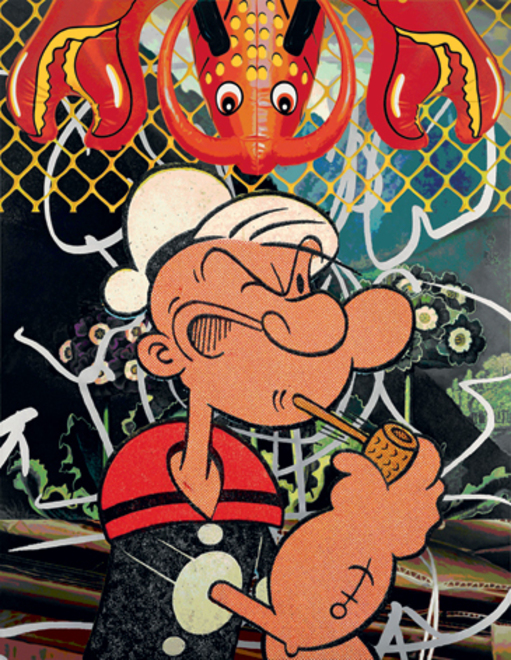
Popeye, Jeff Koons 2003
Do cans of spinach pair well with lobster?
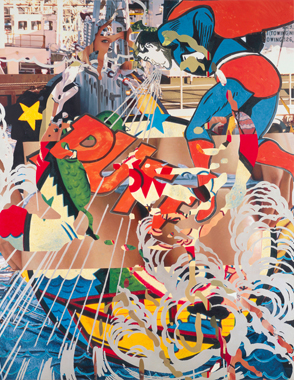
Olive Oyl, Jeff Koons, 2003
It took me a while to figure out why this painting with a distorted version of Andy Warhol’s Superman is titled after Popeye’s wife. There’s actually an outline of Olive Oyl’s head in the picture, it’s just really hard to notice...
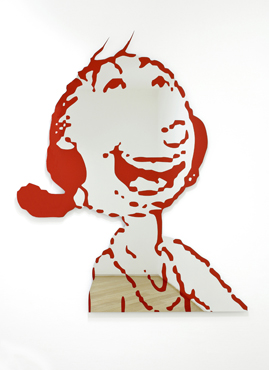
Until you see Koons’ mirror-polished steel reproduction of Olive Oyl. Now do you see it?
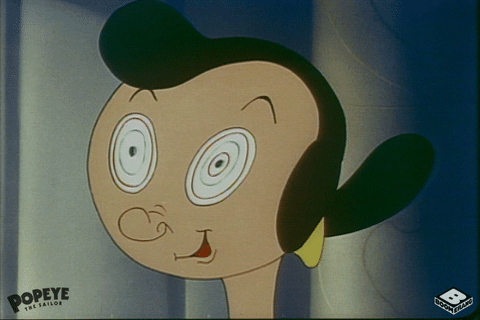
Olive Oyl sees everything.
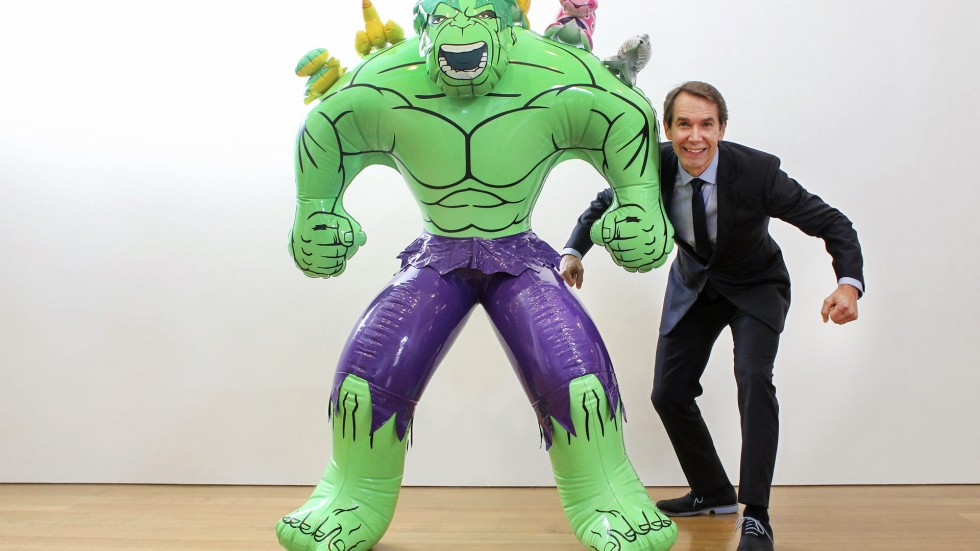
Hulk Friends, Jeff Koons, 2004-2012
Jeff Koons also did a series featuring the Inflatable- I mean, Incredible Hulk. Over 50 pieces of Hulk-related artwork are part of Koon’s series Hulk Elvis (which has nothing to do with Elvis, sadly).
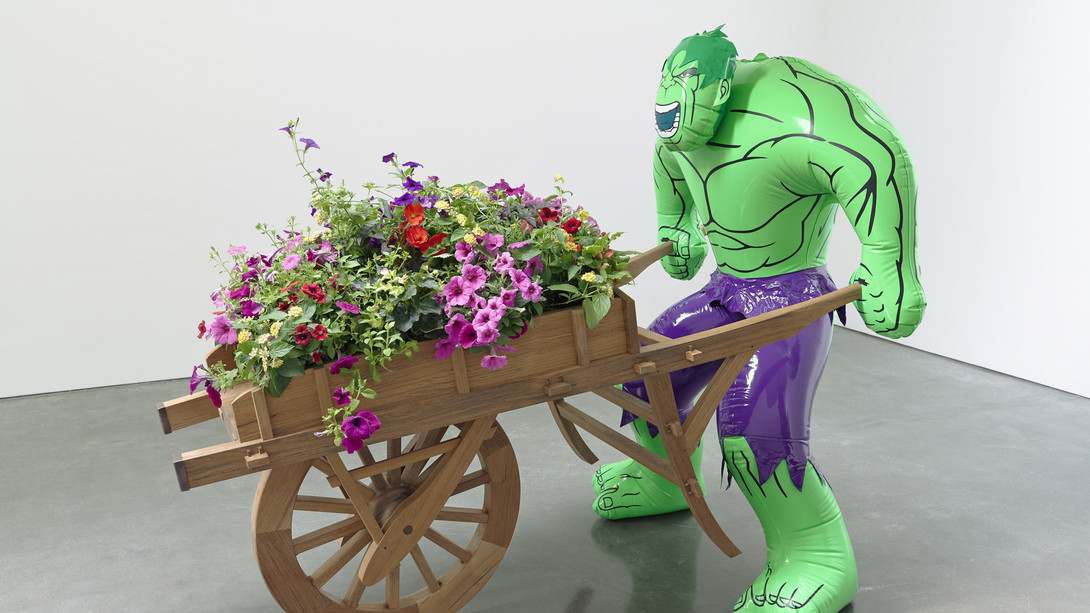
Hulk Wheelbarrow, Jeff Koons, 2004-2013
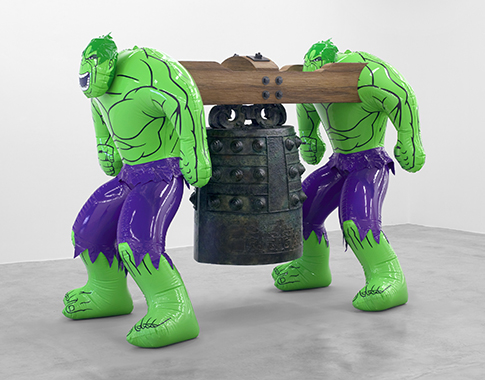
Hulk Bell, Jeff Koons, 2004-2012

Triple Hulk Elvis I, Jeff Koons, 2007
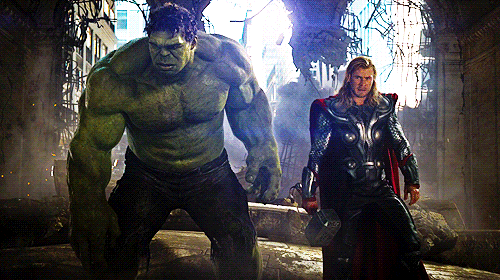
when somebody says comic books are lame
While lots of artists have painted comic book heroes, only someone like Steve Kaufman got the attention of his heroes-the guys who created comic books. Kaufman attended Manhattan’s School of Visual Art where he met Andy Warhol and later became Warhol’s assistant at The Factory. Kaufman later befriended his fellow classmate Keith Haring and even performed in a group show with him. In the 1990s, Kaufman opened his own art studio and began working on comic book style paintings that he eventually became famous for.
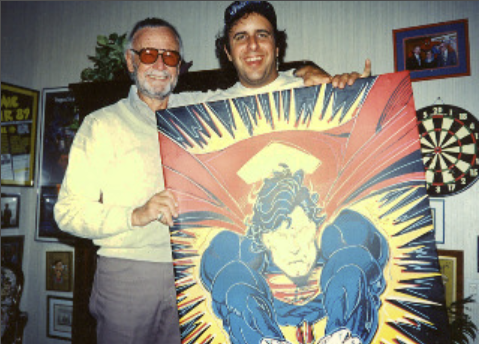
Steve Kaufman with Stan Lee
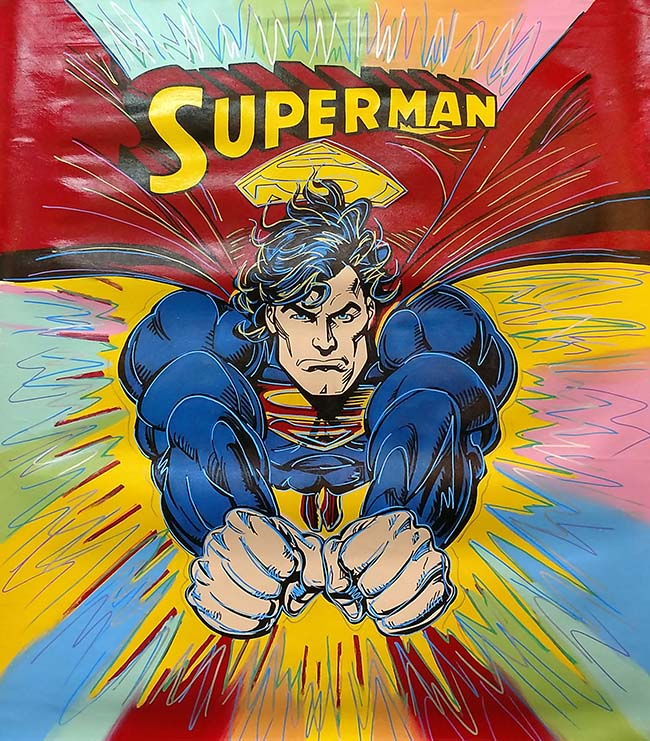
Superman Burst, Steve Kaufman
“Fourteen years ago when I sold my first comic book painting of Superman, people would say that wasn’t fine art. Now I meet people who tell me they love my superman painting. Paintings like this celebrate the icons of our childhood.” - Steve Laufman
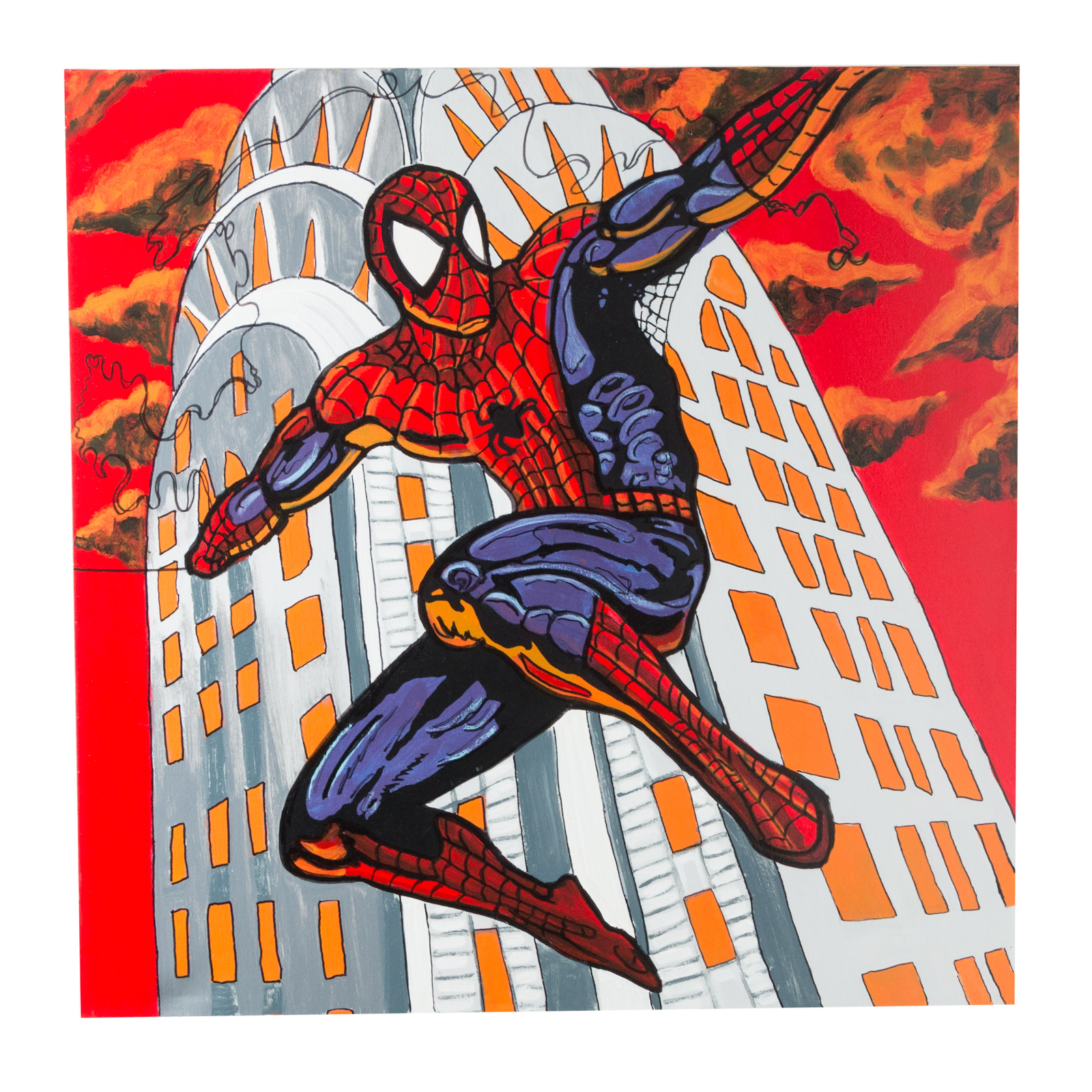
Spiderman (Red), Steve Kaufman
When Kaufman met Stan Lee in 1995, he told him he’d get Spiderman into a museum. In 2003, the Nevada Museum accepted two of Kaufman’s Spiderman paintings into their collection.
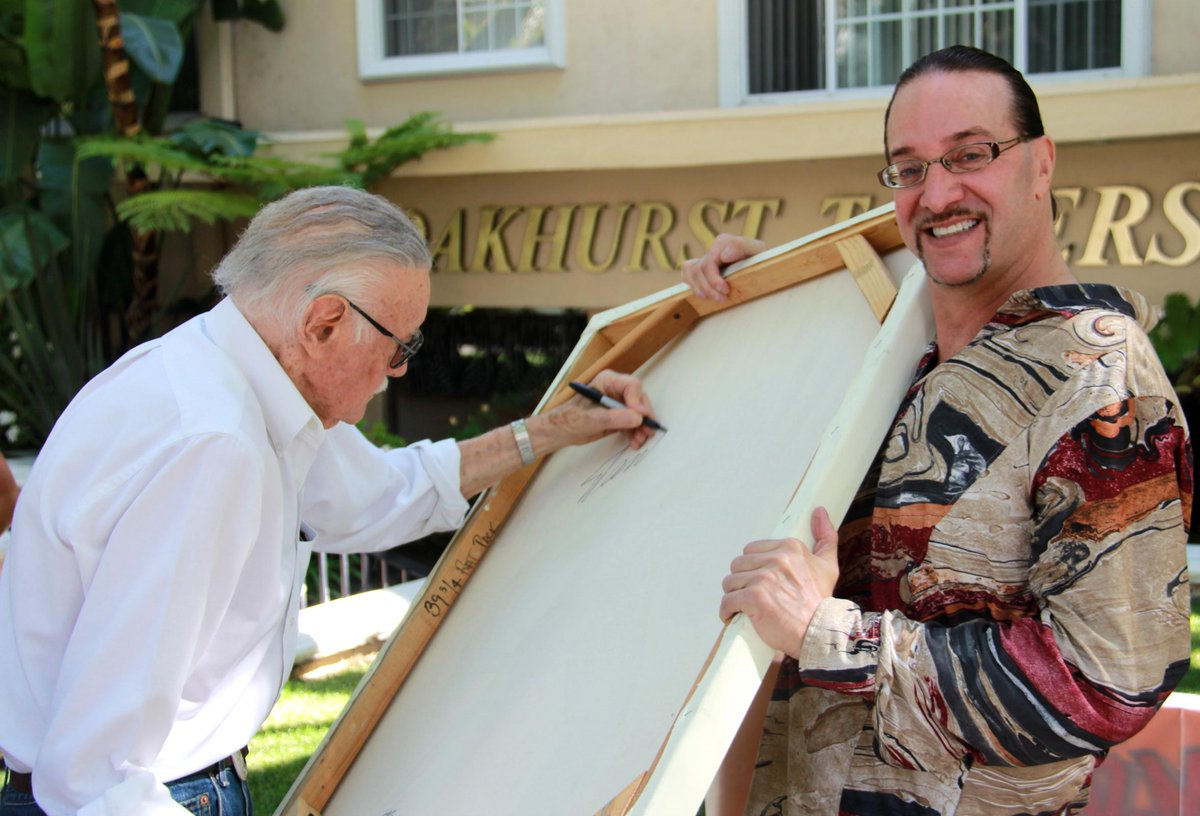
Kaufman personally worked with Stan Lee, who signed some of his paintings.
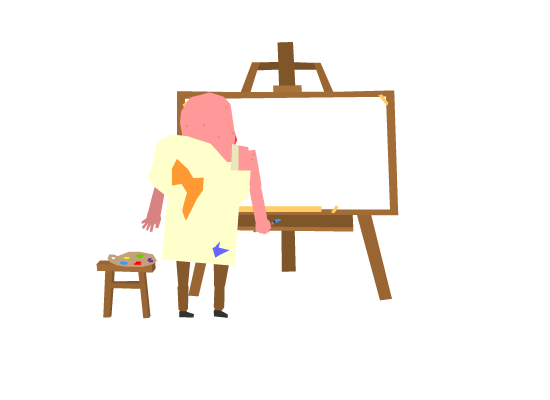
Artists don’t have to paint comic book characters to engage with the elaborate comic book world. Some have tried their own hand at creating comics, proving that comic book illustration is indeed a form of respectable art.
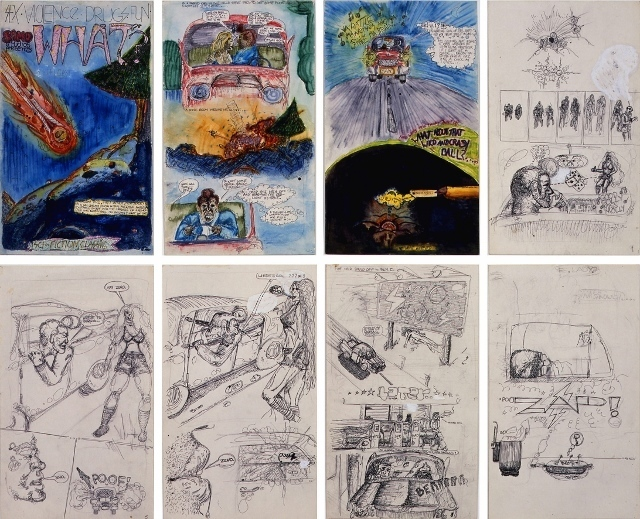
The Comic Book, Jean-Michel Basquiat (1978)
Nobody has described this strip better than this description provided by Sothebys: "To his predilection for anatomic charts and love of children's drawing style, Basquiat adds an occasional reliance on comic-book sources like Mad, Batman, Superman and Popeye. In no way does his painting try to disguise the many inspirations drawn unadulterated from television and the popular visual media. That is exactly what makes it evocative of its era, an age shaped mainly by mass media." —Leonhard Emmerling, Jean-Michel Basquiat: 1960-1998
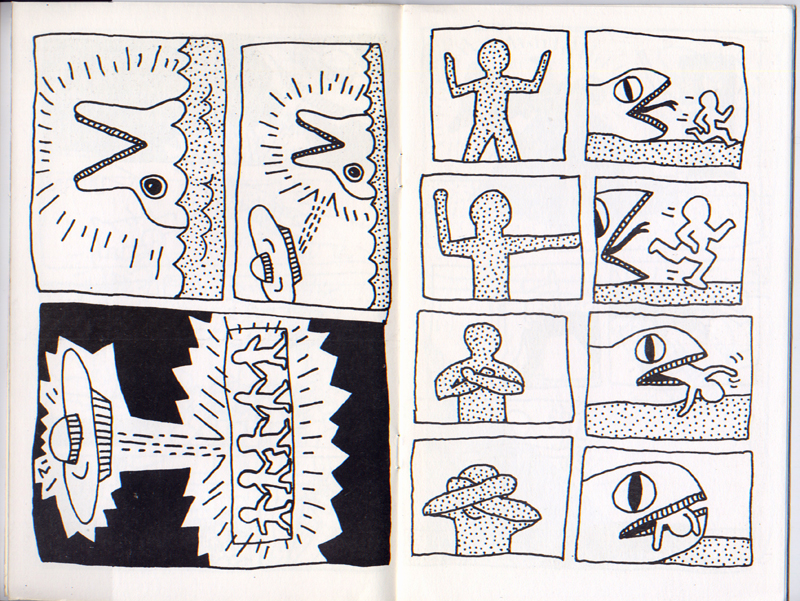
Keith Haring, Appearances Press, 1981

Keith Haring, Appearances Press, 1981
Basquiat’s good friend Keith Haring published a book of drawings in 1981 that were all essentially comic strips. Haring’s famous figures have appeared in miscellaneous comic-like artworks up until his death in 1990.
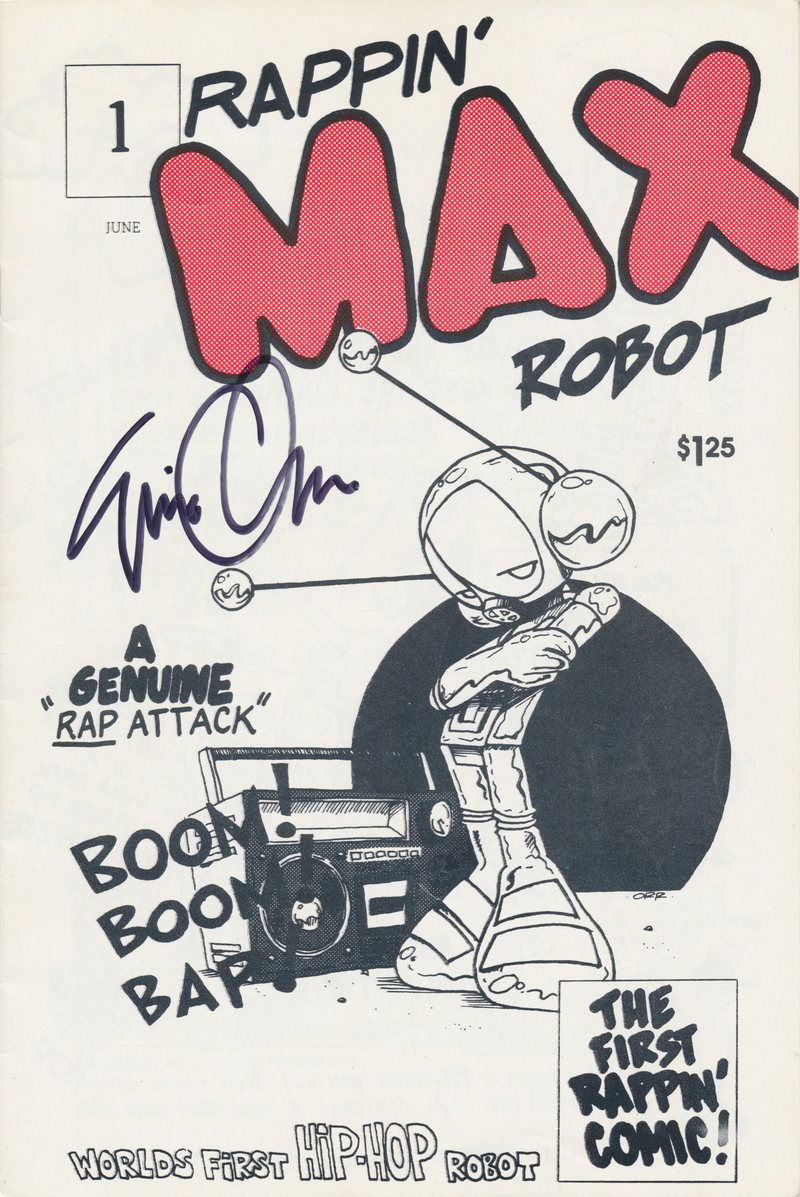
Rappin’ Max Robot, Eric Orr and Keith Haring, 1986
Haring collaborated with New York-based graffiti artist Eric Orr to create the first hip-hop comic ever. Orr was the only artist Haring collaborated with in the subway system. The Rappin’ Max archives are now part of Cornell University’s Hip Hop Collection.
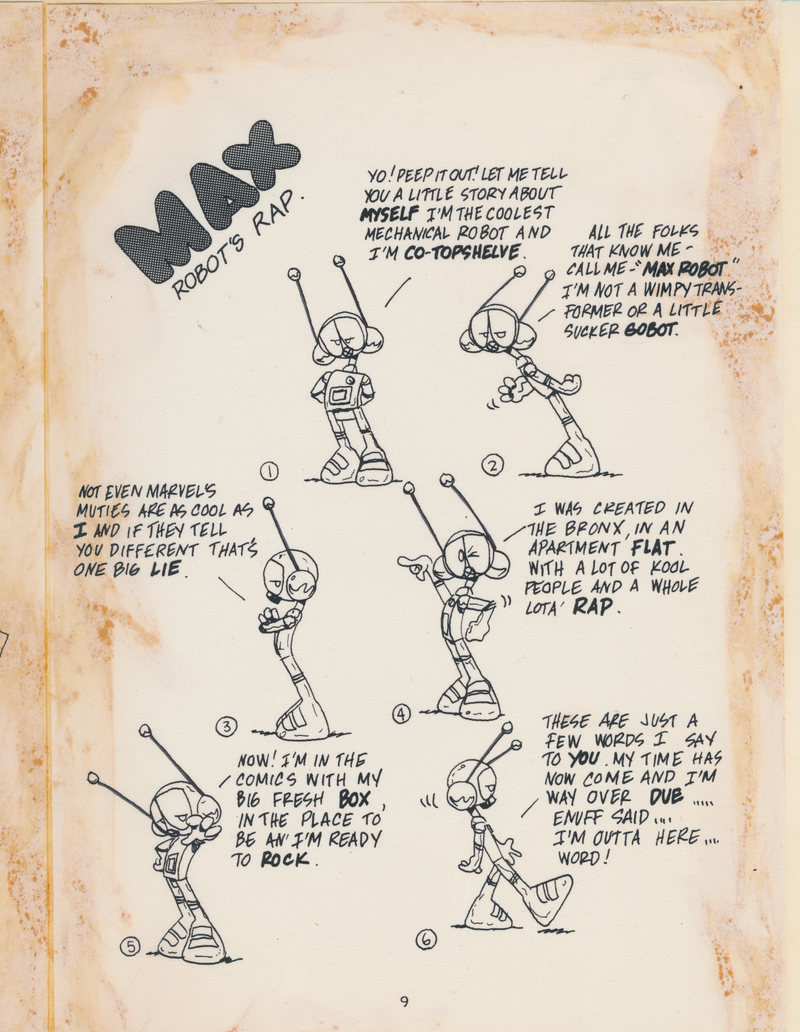
a page from Rappin’ Max
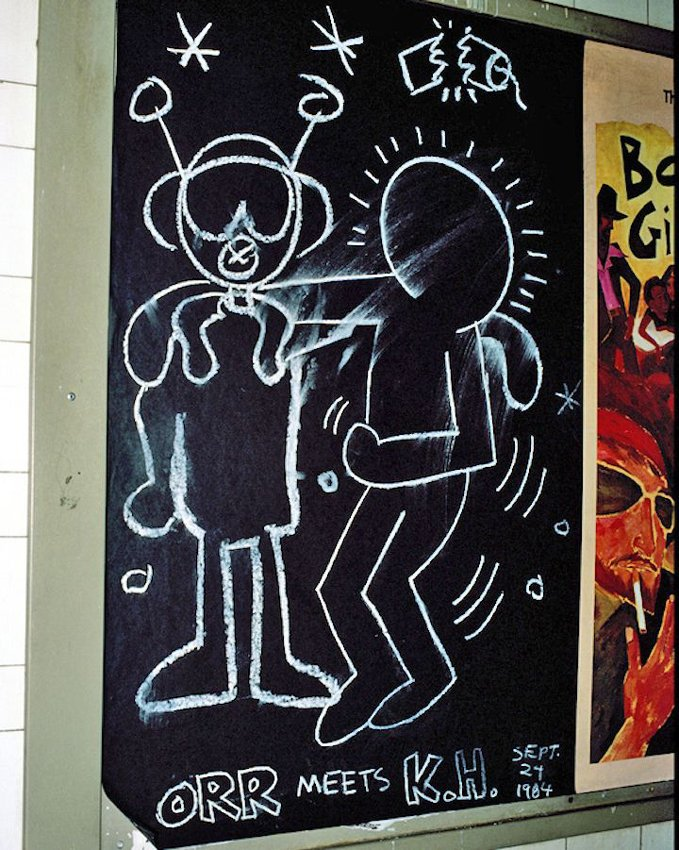
Keith Haring and Eric Orr’s trademark characters
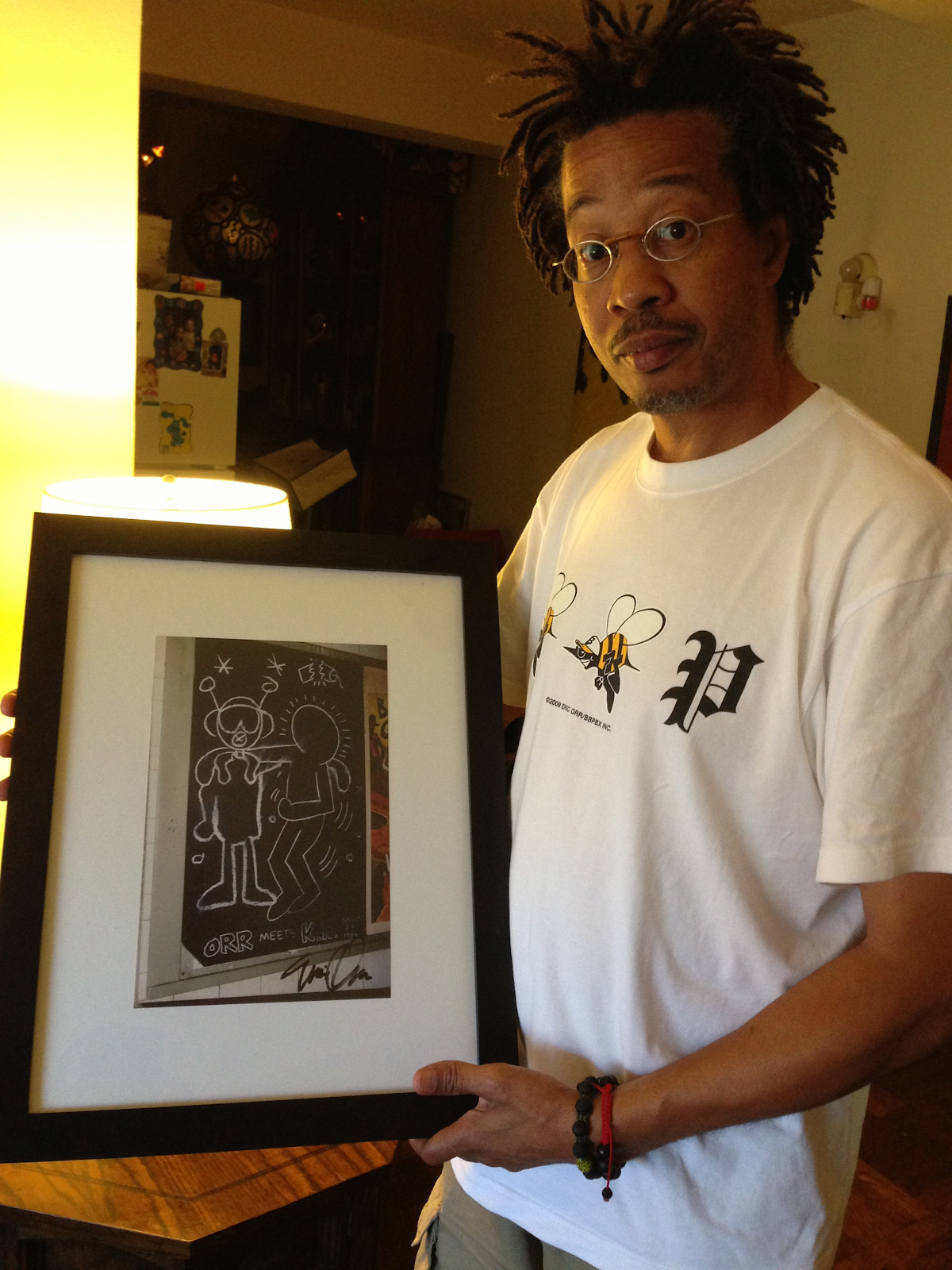
Eric Orr with a framed photograph of his graffiti piece with Haring
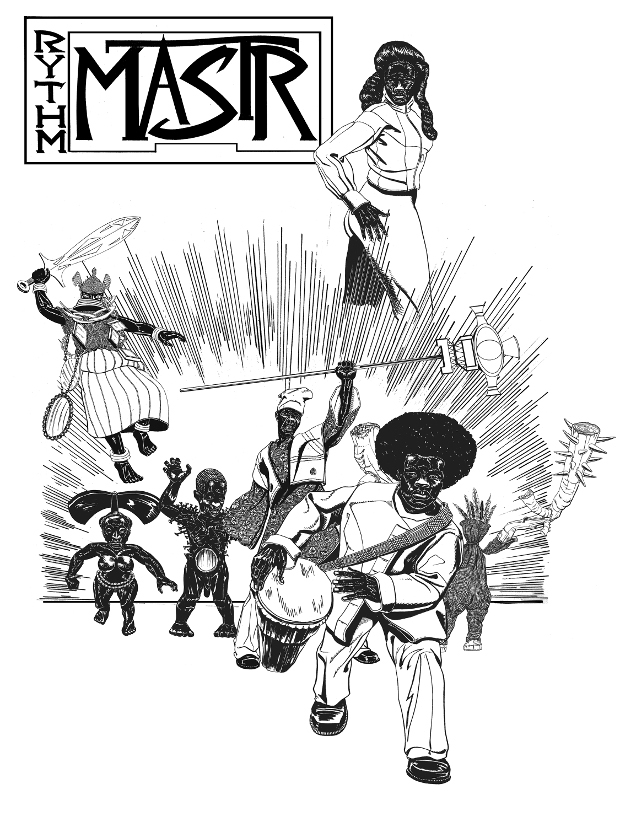
Rythm Mastr, Kerry James Marshall, 1999
Kerry James Marshall started his comic book project Rythm Mastr in 1999 as a response to the lack of black heroes in comic books who weren’t part of larger groups like Black Panther or Storm. Marshall specifically based his superheroes off of African deities as a way to keep traditions alive, rather than rendering traditional African cultures obsolete.

a gorgeous set of panels from Rythm Mastr
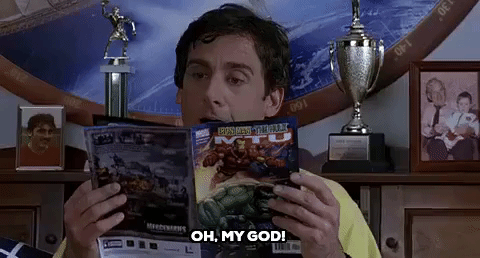
how it feels to chew 5 gum read comics
Alright, so clearly there are lots of artists out there who have a deep appreciation for comic books. Now we’ll take a look at comic book artists who have referenced their favorite paintings in their work.
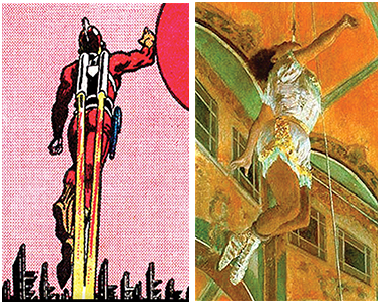
Mystery in Space #78, Carmine Infantino, 1962
Miss La La at the Cirque Fernando, Edgar Degas, 1879
Carmine Infantino was responsible for reviving the Flash as Barry Allen during the Silver Age of Comics. From a design standpoint, Infantino has largely cited Degas and the French Impressionists, Alberto Giacometti, Frank Lloyd Wright, and Amedeo Modigliani as his major influences. In one interview, Infantino expressed his admiration for Degas’ subtle design choices of setting and human form in his painting In a Cafe, stating “It’s so simple, it’s frightening.” Pop culture expert and comic book illustrator Arlen Schumer has additionally pointed out the similarities between Infantino’s work and Duchamp’s Nude Descending a Staircase. Infantino mainly drew inspiration from these artists’ ability to convey motion.
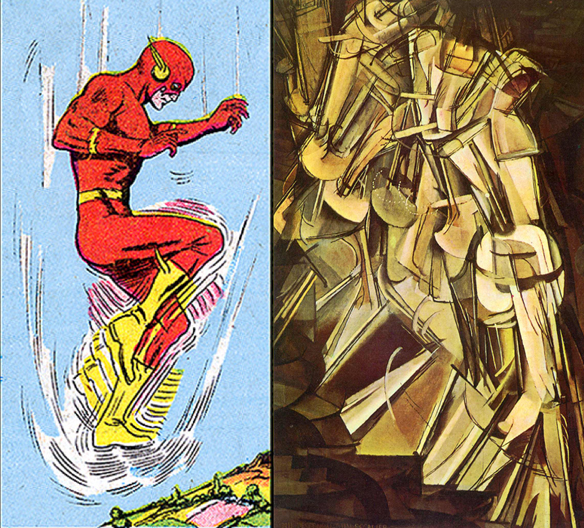
The Flash #11, Carmine Infantino, 1969
Nude Descending a Staircase, Marcel Duchamp, 1912
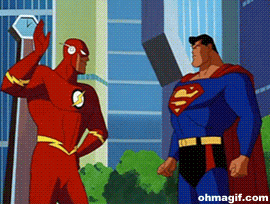
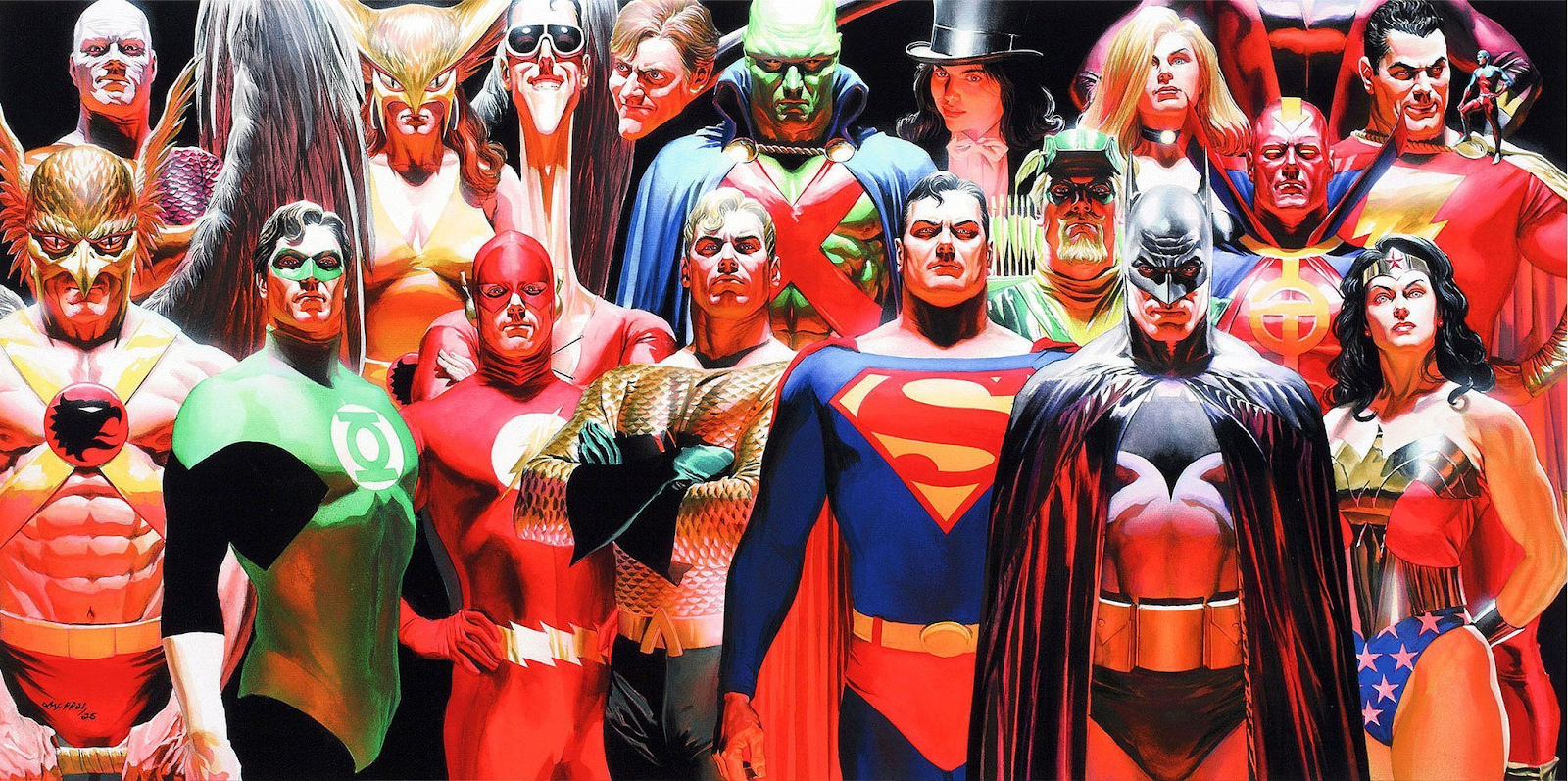
Infinitely Heroic, Alex Ross, 2008
Revolutionary comic book writer/artist Alex Ross has been called the “Norman Rockwell of comics” based on his photorealistic illustration of superheroes. He won the Comic Buyer Guide’s award for “Best Painter” so many times that they stopped giving out the award. Ross’ impressive work was recently on display in an exhibit titled “Heroes and Villains” organized by the Andy Warhol Museum and featured at the Norman Rockwell Museum. To promote the exhibit, Ross paid tribute painted both Warhol and Rockwell as superheroes.
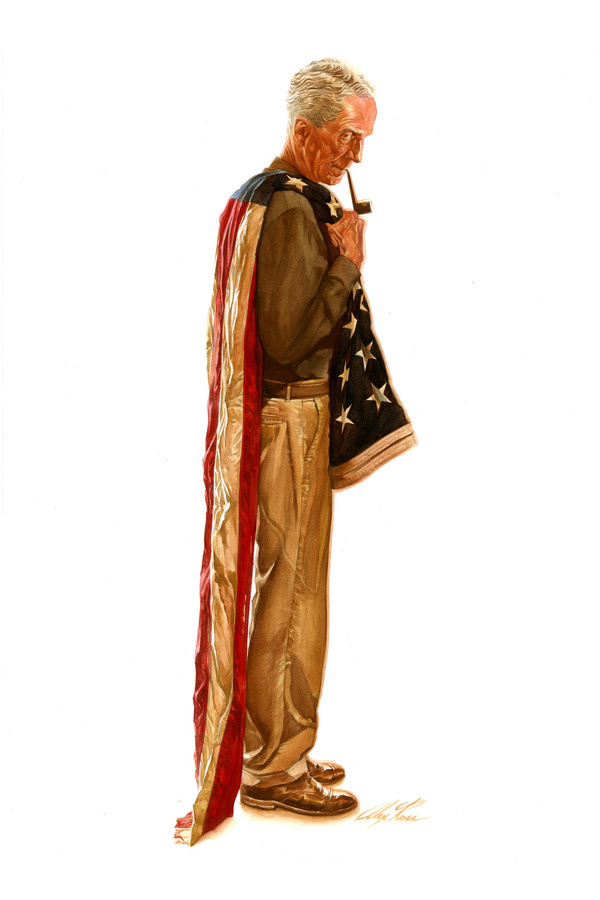
Norman Rockwell, Alex Ross, 2012
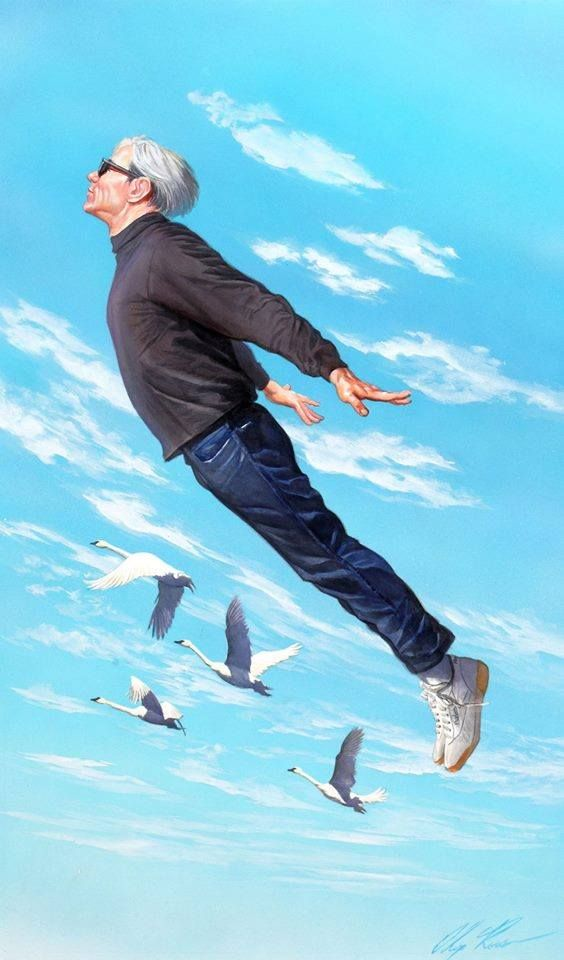
Andy Warhol, Alex Ross, 2012
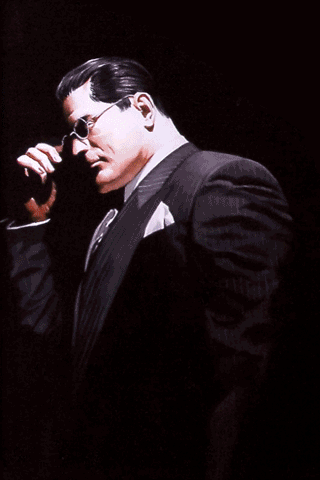
an Alex Ross illustration of Superman
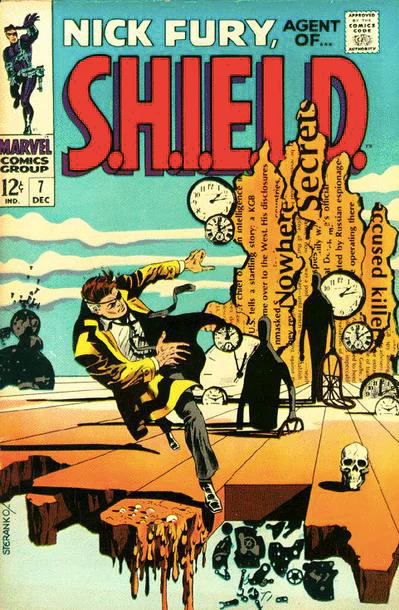
Nick Fury, Agent of S.H.I.E.L.D, #7 , Jim Steranko, 1968
Illustrator Jim Steranko is a Marvel legend admired for his imaginative comic book covers, including this Dali-inspired cover for Nick Fury. Steranko has stated that discovering Dali’s surrealist artworks one of the great “invisible epiphanies” in his life.
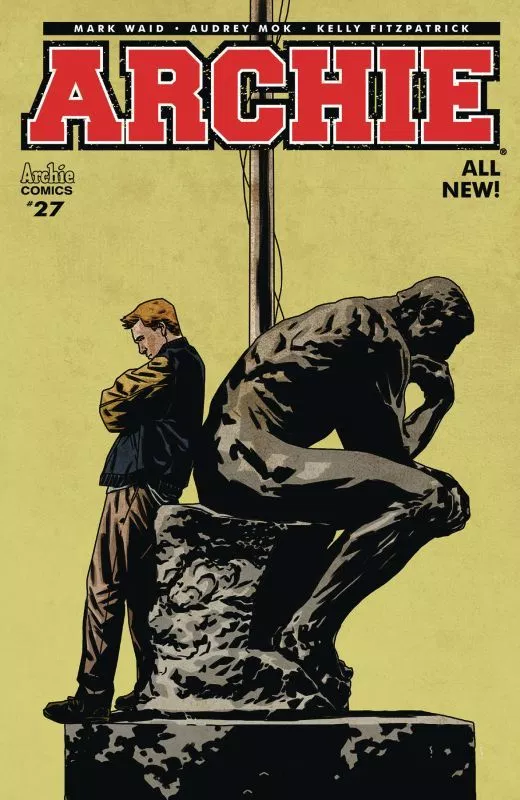
Archie #27, Audrey Mok and Kelly Fitzpatrick, 2018
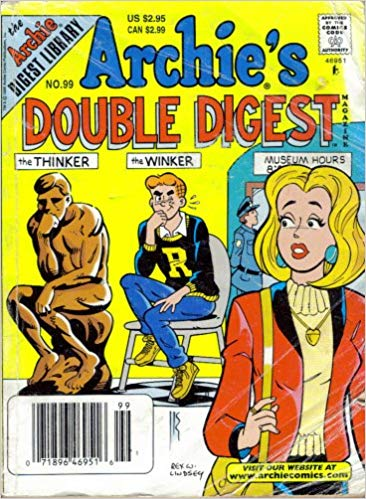
Archie’s Double Digest No. 99, Rex Lindsey, 1982
Archie Comics is one of the longest-running comics in history. As part of the "New Riverdale" launch in 2016, Archie was redesigned to step away from its classic style in order to look more appealing to modern audiences. Whichever you prefer, it looks like both old and new Archie are fans of The Thinker. We imagine he’s probably thinking about Betty and Veronica.
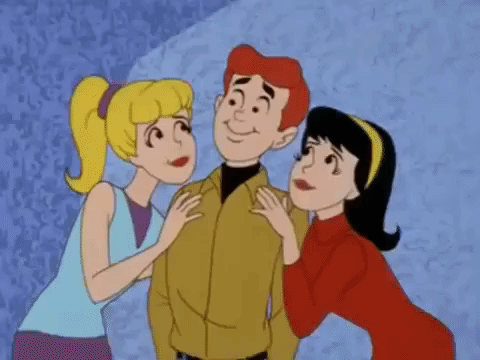
the most famous love triangle in comics
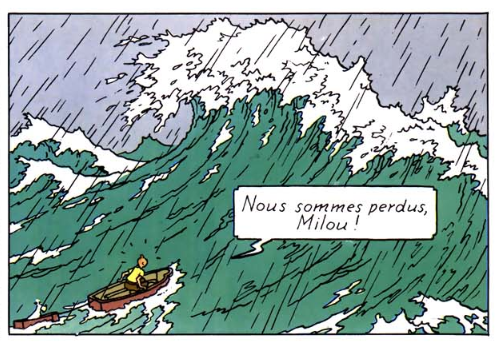
The Blue Lotus, Hergé, 1936

The Great Wave off Kanagawa, Katsushika Hokusai, 1829-1833
Speaking of red-haired protagonists, we can’t forget about Tintin! French comic series The Adventures of Tintin also makes some beautifully-done references to art history. Hergé, the creator of Tintin, was inspired by Japanese woodblock prints for his issue of The Blue Lotus. This panel is definitely a nod to Hokusai’s Great Wave off Kanagawa.
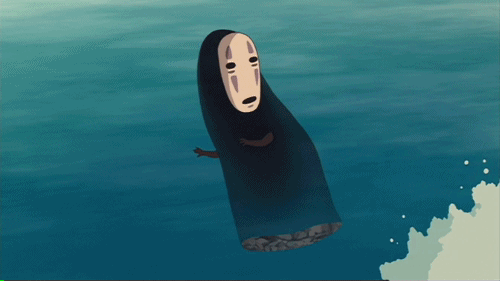
when you realize comic book art is fine art
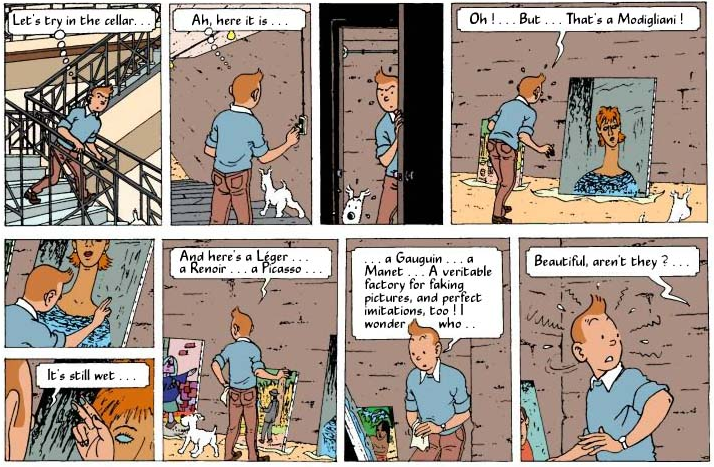
Page 40 of Tintin and the Alph-Art, Hergé, 1986
This posthumously-published issue is set during Brussel’s modern art scene. In this panel, he discovers a forger’s paintings in the style of Modigliani, Renoir, Picasso, Gauguin, and Manet. The comic was left unfinished by the time of Hergé’s death in 1983. HIs colleague and assistant Bob de Moor completed illustrating the rest of the comic for its publication.
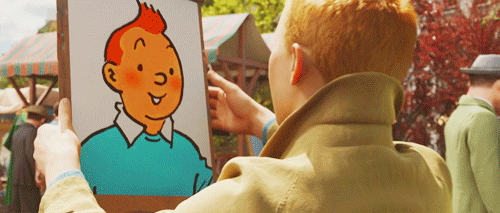
The Tintin Twins?


Yet another orange-haired comic protagonist has shown their appreciation for art. Jim Davis’ beloved Garfield makes a few Van Gogh-related comments toward Jon.
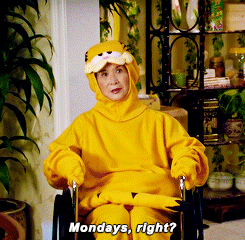
Van Gogh could probably relate

We’ll end with some strips of Calvin being too smart for his own good. I like to think of this as Calvin making fun of Gauguin because nobody needs to know him; he was a jerk who probably cut off Van Gogh’s ear, and nobody needs that negativity in their life.

Another Nude Descending a Staircase reference! We understand you, Calvin.
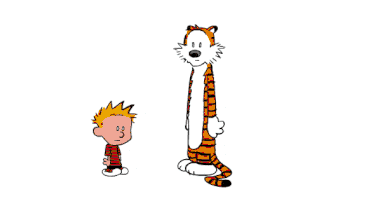
That’s all for now, folks. We hope you enjoy National Comic Book Day by stopping by your local comic book store and checking out the vast selection of comic books- there’s a series for everyone! Let us know if you find any more artists who love comics or comic book illustrators who love art history- we’d love to add female artists and more artists of color to this post.
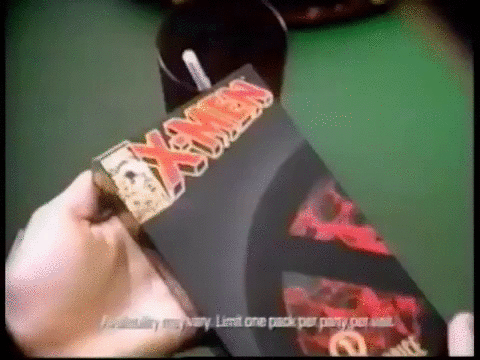
Sources
- https://www.bleedingcool.com/2011/05/25/roy-lichtenstein-didnt-even-lik…
- http://www.paulgravett.com/articles/article/the_principality_of_lichten…
- http://comicsalliance.com/deconstructing-lichtenstein-source-comics-rev…
- Shields, Scott A.; Johnathon Keats; Diana L. Daniels (2012). Mel Ramos: 50 Years of Superheroes, Nudes, and Other Pop Delights. San Francisco: Modernism, Inc.
- https://guyhepner.com/artist/andy-warhol-art-prints-paintings/myths-por…
- http://www.stevekaufmanart.com
- http://gallery.98bowery.com/2013/signed-comic-book-1981/
- http://streetartnyc.org/blog/2014/10/09/eric-orr-on-graffiti-keith-hari…
- http://rmc.library.cornell.edu/hiphop/collections.html
- https://13thdimension.com/art-comic-book-art-infantino-kirby-duchamp-an…
- https://www.nrm.org/2012/11/heroes-and-villains-the-comic-book-art-of-a…
- https://triblive.com/x/pittsburghtrib/ae/museums/s_760734.html
- https://www.syfy.com/syfywire/marvel-legend-jim-steranko-picks-his-top-…
- https://atombash.com/extensive-interview-with-jim-steranko-more-than-ju…









